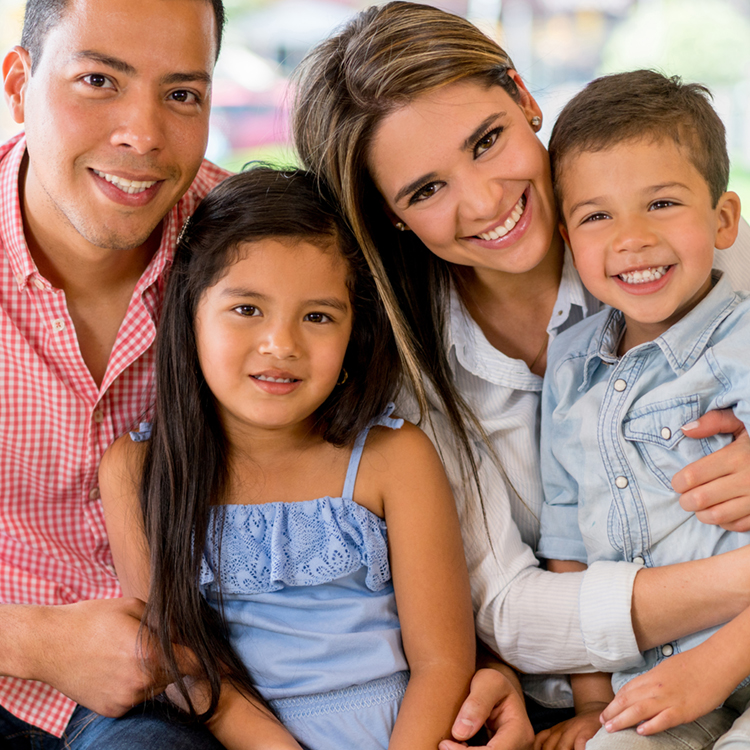- Module 1
 Getting to Know Your Students and Their Families
Getting to Know Your Students and Their FamiliesTeachers often work in neighborhoods different from where they live. They may teach students from different socioeconomic, racial, and cultural backgrounds. Understanding these differences may not be enough to partner with families. Teachers and schools need to provide opportunities for families, community members and educators to get to know one another and develop respect and appreciation for what each brings to educating children. This module provides strategies to do this. https://youtu.be/VAEMlsz65Go
3 Lessons- Lesson 1.1 What Happens When You Don’t Know Your Students
- Lesson 1.2 How Diverse Are We?
- Lesson 1.4 Culturally Responsive Curriculum Ideas
Module 2 Communicating with Families
Communicating with FamiliesCommunication is the single most important factor to establish positive relations in schools. Educators must open lines of communication by being welcoming and positive while informative and accurate through written, oral and other means. Topics can range from academic progress to school policy and practices. Language differences, parents’ lack of familiarity with the school system, differing views of education, and cultural differences between school and home can all be barriers for effective communication. If effective, communication will be multi-directional. This module provides an overview of the importance of communication, effective strategies for identifying and overcoming barriers, and multiple ideas for creative interactions among all school partners.
7 Lessons- Lesson 2.1 What Families Want
- Lesson 2.2 Reflecting on your goals
- Lesson 2.3 Strategies to Improve Communication with Families
- Lesson 2.4 How to Overcome Language Barriers
- Lesson 2.5 Ways to familiarize families with the school system
- Lesson 2.6 Transitioning From Elementary to Middle School
- Lesson 2.7 Transitioning from Middle School to High School
Module 3 Family Engagement
Family EngagementAcross the United States, and especially in Hawai’i, the diversity of our school communities is increasing. Families in Hawaii come from many different ethnicities and immigrant groups and a range of socioeconomic conditions. They include Native Hawaiians, transient military families, homeless, and families with special health and education conditions. Each of these groups has different needs. It is up to educators to learn about, get to know, partner with, and accommodate the needs of children and their families from these diverse situations. This module includes information about each of these groups with specific strategies and ideas for partnering with diverse families.
5 Lessons- Lesson 3.1 What You Don’t Know About Family Engagement
- Lesson 3.2 Ways to Engage Families at Home
- Lesson 3.3 Ways to Engage Families at School
- Lesson 3.4 Welcoming Parent into Schools
- Lesson 3.5 Student-Led Conferences
Module 4 Partnering With Diverse Populations
Partnering With Diverse PopulationsAcross the United States, and especially in Hawai’i, the diversity of our school communities is increasing. Families in Hawaii come from many different ethnicities and immigrant groups and a range of socioeconomic conditions. Examples of family types include heterosexual two-parent families, single-parent families, grandparent-led families, LGBTQ+ families, and multigenerational families. They include Native Hawaiians, transient military families, homeless, and families with special health and education conditions. Each of these groups has different needs. It is up to educators to learn about, get to know, partner with, and accommodate the needs of children and their families from these diverse situations. This module includes information about many of these groups with specific strategies and ideas for partnering with diverse families.
12 Lessons- Lesson 4.1 Developing Cultural Sensitivity
- Lesson 4.2 Families Experiencing Poverty
- Lesson 4.3 Homeless Families
- Lesson 4.4 Native Hawaiian Families
- Lesson 4.5 Immigrant Families
- Lesson 4.6 Filipino Families
- Lesson 4.7 Micronesian Families
- Lesson 4.8 Military Families
- Lesson 4.9 LGBTQIA2S+ Students and Families
- Lesson 4.10 Families with Students in Special Education
- Lesson 4.11 Reflecting on our biases
- Lesson 4.12 Ways to Overcome Cultural Barriers
Module 5 Finding Appropriate Strategies
Finding Appropriate StrategiesThis module is designed for teachers who are looking for specific strategies to involve families in the classroom. It pulls strategies from previous modules and organizes them into categories. We developed this module in response to queries from teachers who wanted a faster way to find appropriate strategies to include families in their classrooms. Each lesson has several sections that are listed on the right-hand side, and each section lists strategies related related to the lesson topic. Included under each strategy is the website URL that discusses that strategy (if the strategy comes from a particular website), as well as the module, lesson and section that it was originally mentioned on the AFFECT website.
10 Lessons- Lesson 5.1 Family Engagement Strategy Impact Levels
- Lesson 5.2 Greeting and Welcoming
- Lesson 5.3 Getting to Know Your Families – General Strategies
- Lesson 5.4 Getting to Know Your Families – Connecting with Diverse Families in Your Classroom
- Lesson 5.5 Communication with Families – General
- Lesson 5.6 Communication with Families- Conferences
- Lesson 5.7 Creating Opportunities for Family Engagement
- Lesson 5.8 Ways to Help Parents Support Academics at Home
- Lesson 5.9 Partnering with Diverse Populations
- Lesson 5.10 Partnering with the Community

